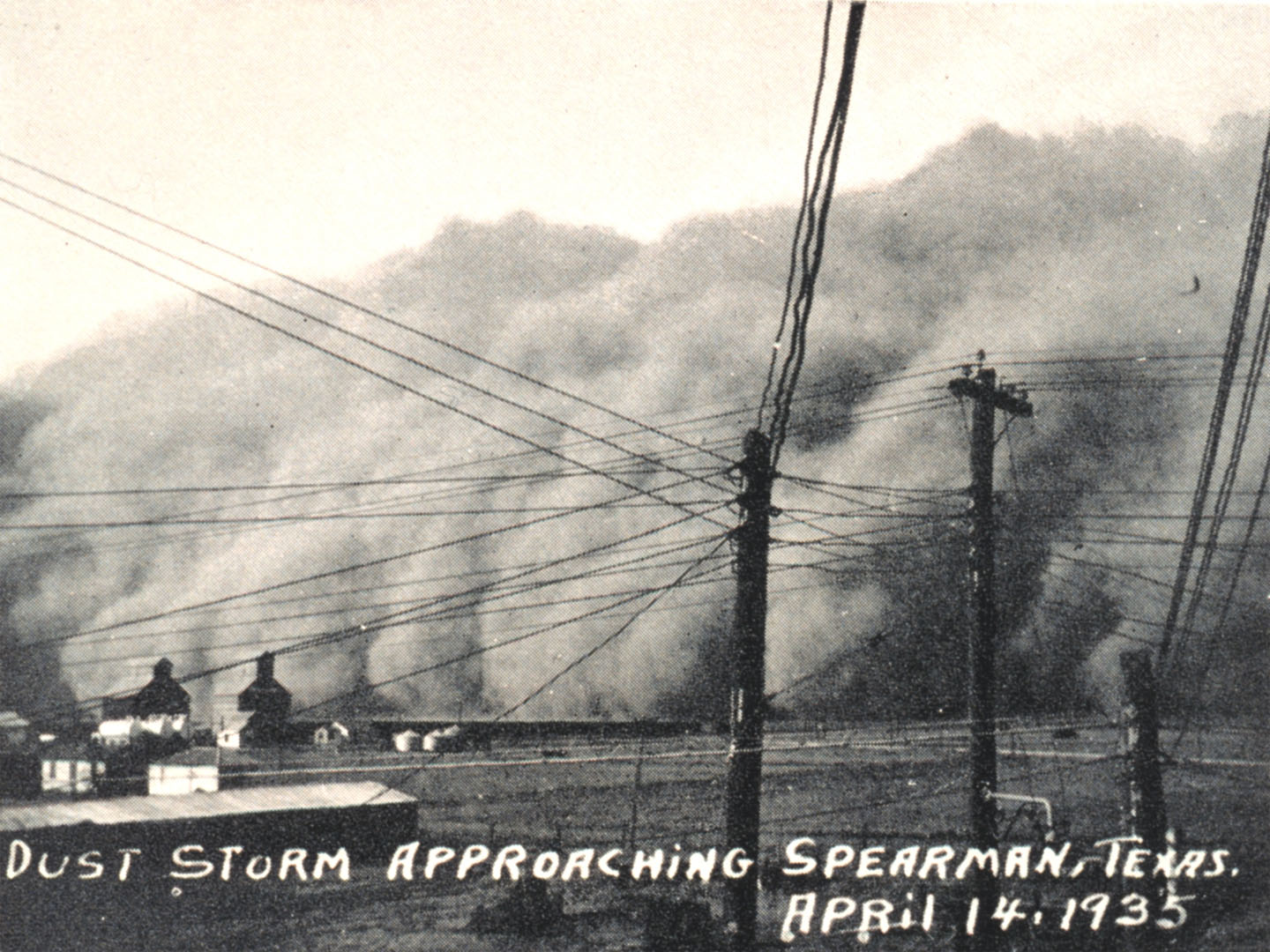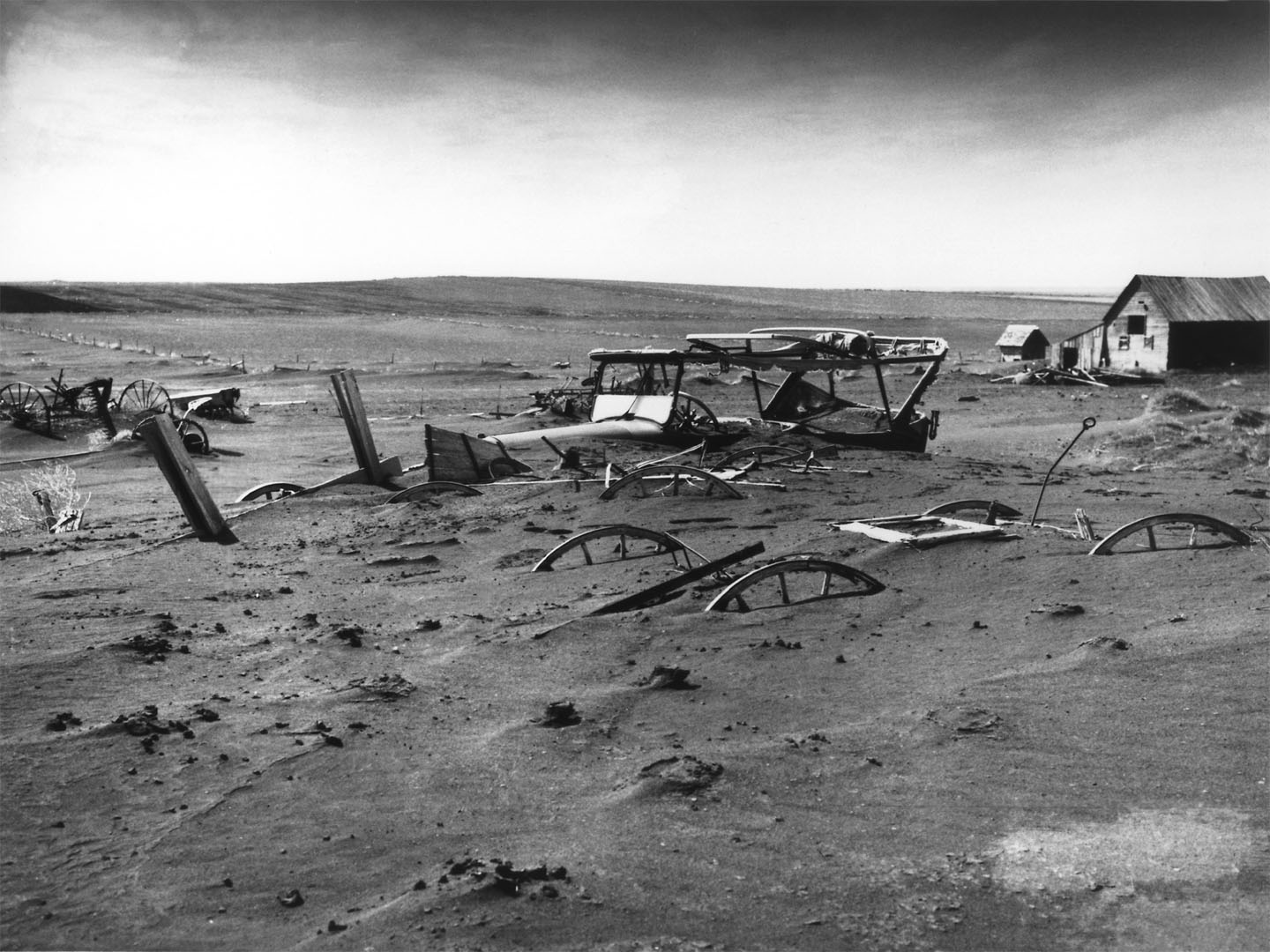Living Through the Dust Bowl
Stanley Jensen grew up on an isolated farmstead in South Dakota. The farm was on a dirt road two miles from a gravel road and 15 miles from the nearest paved road. Below is an excerpt from an interview that he gave on what it was like to live through the Dust Bowl, a time of large dust storms and drought in the 1930s.
"I can't really tell you about all of the difficulties that farmers and farmers' wives faced trying to keep houses clean. People hung up sheets over their windows to try to keep the dust out. But, of course, houses were not very tight, and stuff sifted in. The road ditches drifted full of dust and dirt and silt, just like snow. And then, of course, it didn't rain and we didn't raise hardly any crops. And then the grasshoppers came in and ate what was there. They were very difficult, difficult years.”
“… We tried to control them (grasshoppers) by poison. And the government provided poison … I don't remember what the poison was. But it was mixed up with sawdust. We got a bunch of that stuff and spread it out along the sides of the fields. It wasn't very effective at all. They also rigged up scoops to scoop up the grasshoppers and collect them in kind of a scoop arrangement. Of course, that was a waste of time as well. There wasn't much you could do. One thing my dad did, one year, was he decided he'd better harvest his oats early. The grasshoppers were going to eat it before he got it harvested. So he started. Back then we were using a binder. We'd cut the oats and bound it and made bundles out of it. He went around the outside of the field, and the grasshoppers just went ahead of him all the way around. He'd have been better off if he'd have started out in the middle, I think, and worked out to the outside. I don't think he saved very much of his oat crop."
"And it was so hot. The temperatures were up over a hundred degrees for days at a time, also … And of course, we didn't have air conditioning. I remember sleeping outside. We made little tents and slept outside … on the porch."
"In some ways I think that one of the disadvantages of young people today is they didn't have the opportunity to grow up poor … I think that motivation is certainly important in terms of your work ethic. That's the big thing in terms of work ethics and sense of goals and what you do with your life. Young people today it seems to me may be – they have so many choices, it's hard to pick something. That may be a disadvantage. There are so many things that they do – going places and seeing things – that we never did until much, much later, if ever."
(Note: More information about the Dust Bowl can found in the upcoming section “History Link – The Dust Bowl”.)
Questions for Comprehension and Understanding:
- How did people try to keep dust out of their houses? “People hung up sheets over their windows to try to keep the dust out.”
-
- How did the government try to help the farmers control grasshoppers? The government provided the farmers with poison.
- Was the government solution for grasshoppers effective? “It wasn't very effective at all.”
- What does Jensen say in the interview that gives some indication of the size of the grasshopper problem? There were so many grasshoppers that farmers “rigged up scoops to scoop up the grasshoppers and collect them in kind of a scoop arrangement.”
- What did Jensen do to cope with the heat at night time? He slept out on the porch in a little tent.
-
- Jensen states “that one of the disadvantages of young people today is they didn't have the opportunity to grow up poor.” What does he mean by this? Jensen states that growing up poor provided motivation “in terms of work ethics and sense of goals and what you do with your life.” He feels that the large number of choices that young people have today is a disadvantage.
- Do you agree with Jensen’s statement? Support your view. Answers to this question will vary depending on the individual.

